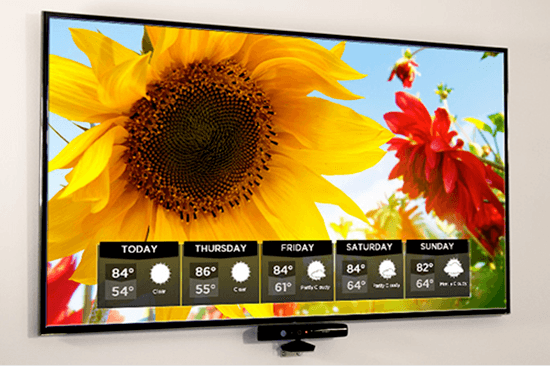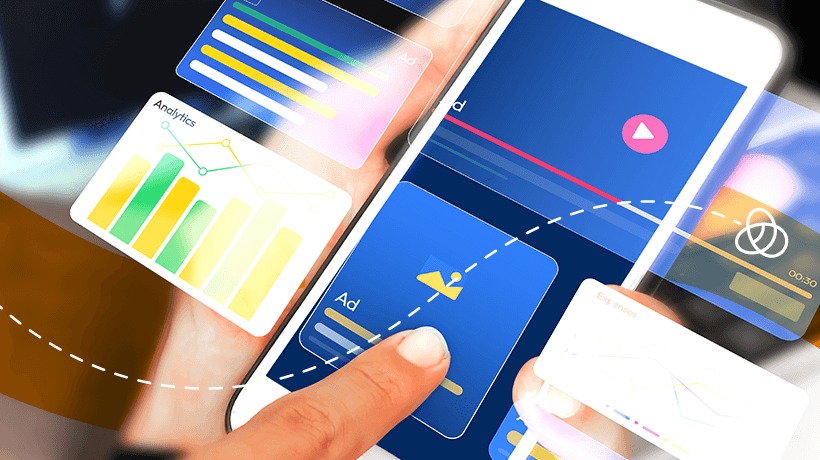Best Practices For Effective Digital Signage
The first time I heard the term digital signage was back in early 2000 when I was working as a graphic designer specializing in retail signage. Back then, businesses were launching their own in-house TV networks to better communicate with staff and customers. A few large corporations ran their own private cable or satellite networks, while others simply recorded content and shipped out VHS tapes to branch offices and retail outlets.
As recording and playback equipment became cheaper and easier to use, corporate video really started to take off. Pretty soon, folks who didn’t know much about video production were doing their own non-linear editing on Macs and sending videos across the country. These videos were being used for everything from employee training to advertising. I remember seeing these small TV/VHS player combo units sitting on store shelves running infomercials on an endless loop. This was before flat screen TVs and the internet. Eventually VHS tapes were replaced by DVDs and the rest is history.
To me, digital signage really started when modern video codecs and high bandwidth internet access became available. Of course, there were other contributing factors, such as powerful PC equipment and big flat screen TVs. Over time technologies improved, equipment prices fell and digital signage was truly born.
Digital signage requires two components: Hardware and software. On the hardware side we have PCs, Android media players, tablets, flat screen TVs, projectors, and LED panels. It’s important to note that there are very few digital signage specific hardware components on the market. Most hardware components required for a typical digital signage installation can be sourced at any electronics retail store.
On the software side we find a plethora of proprietary applications commonly referred to as Content Management Software or CMS.
The CMS software handles many tasks:
- Manages the media players that are part of the network.
- Stores and catalogs all required media for the system.
- Handles content playlists and schedules.
- Lets users create content and templates.
- Manages real-time data feeds such as news, weather, etc.
- Sends content updates to the media players.
- Generates proof of playback reports for end-users.
Those are the more common features you will find in most digital signage CMS products. However, it’s important to note some products are fairly intuitive while others require weeks of training and special certification. This is where I come in.
Since 2000 I have trained hundreds of people in the use of proprietary digital signage software. I deliver training sessions online to a global customer base using a range of screen sharing products and services, such as join.me and Skype. I rely on a reliable, high-bandwidth internet service and use professional grade equipment (high-end PC, professional boom-mike, etc.).
To successfully deliver training online, follow these tips:
- Use a good scheduling system.
Join.me integrates well with Microsoft Outlook so it’s easy to send out invitations and track confirmation messages. - Start your sessions early.
I have found most folks like to test their connection in advance so it’s a good idea to log in 10 to 15 minutes ahead of time. - Don’t try to cram too much information in too short a time period.
If your material requires 6 hours to cover, don’t try and do it in 4 hours. Your audience won’t be able to keep up and they won’t absorb anything. - Write a detailed curriculum and stick to it.
It’s your “road map” so follow it closely and be sure to share it with your audience. - Digital signage is a visual medium so be creative.
Use lots of visual aids. I like to create slides in PowerPoint and Google Docs and then share them as PDFs at the end of each session. - If possible, record your training sessions and share them with your audience.
Many screen sharing software applications let you record your sessions and share a link so your audience can go back and review the material. However, it’s important to always ask the audience’s permission before you start recording. - Be sure to pause periodically so the audience can ask questions.
Not everyone likes to interrupt the trainer so allow enough time for questions within the time allotted for the session. I always try and leave an extra 10 minutes near the end so folks can ask questions but I also like to pause every now and then to solicit their feedback. - Try to engage your audience (see above).
It’s easy to get into a mode where you’ve performed the same training dozens of time that you can almost recite it in your sleep. Try and get a conversation going with the audience. It will break the ice and wake everyone up so they are more receptive. - Good trainers are great at simplifying complex technical concepts; try to be a “complexity sponge” and talk at the audience’s level.
Digital signage products tend to have lots of features and complexity so it’s important to find ways to describe some of these concepts in an approachable manner. Adapt the material to the audience. - Digital signage can be used in a wide range of applications, so I make it a point to ask the audience what specific use they have in mind before I begin each session.
This way I can concentrate on the topics that will be the most useful to them and skip the features they will never use. This also goes a long way in keeping the audience interested. There is nothing worse than having to sit and listen to someone covering a topic that is not relevant to you. - Are you training someone from another country? Try and gauge their English (or whatever language you are using for the session).
I offer training services in English and French so when I train folks in countries where those are not the main language, I try to gauge their level of understanding before I begin. Then I adapt my delivery to ensure the audience understands. When in doubt, I will slow down my pace, repeat certain explanations and solicit feedback more often. - Always confirm the audience can hear you and see your screen.
I have had experiences where I found out the folks at the other end couldn’t see my screen 10 minutes into the material so always ask, especially if you are training people located in countries with poor Internet access.
Here are the things that are most likely to trip up an eLearning session:
- Unreliable or slow internet access.
- Bad equipment (cheap microphone, unreliable PC).
- Folks who have a very basic understanding of the language that will be used for the session or who are not sufficiently technical or creative to relate with the material being presented.
- Make sure there will be no distractions (at both ends of the call). If you are working from home, make sure you will not be disturbed for the duration of the session.
- When delivering very long sessions, make time for breaks. If possible, break down sessions into manageable blocks of time. I try to limit my sessions to 2 hours. I find anything longer is wasted as the audience stops paying attention.
- An unreceptive audience. I have had sessions where folks had been directed to attend the session even though they would have little or no use for the product as it was not part of their responsibilities. The training session becomes little more than a waste of time which is unproductive to both trainer and the audience.
Being an eLearning professional can be very rewarding. It’s great to hear from attendees when they are happy with the results but it's also important to know when things didn’t go so well.
I make it a point to follow up and solicit feedback from attendees because you need to know if you're on the right track. I use this feedback to adjust the material and look for ways to improve my delivery.
I hope you will find this article useful and apply some of these principles to your own work.









